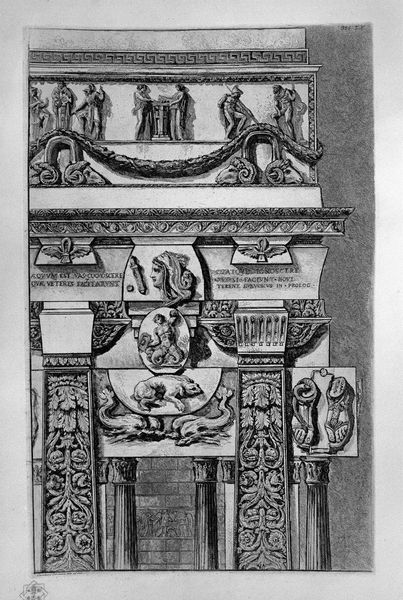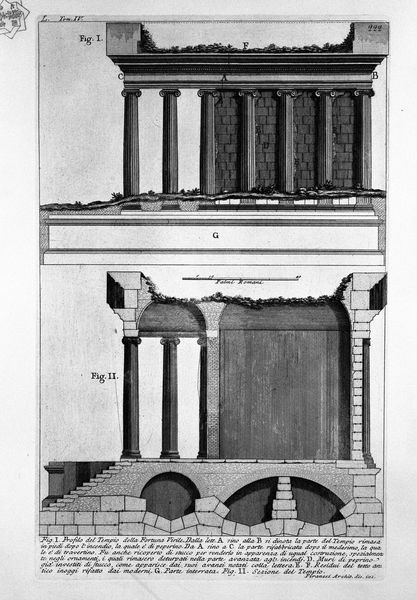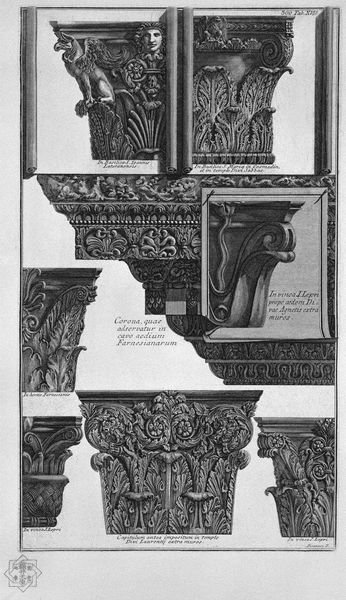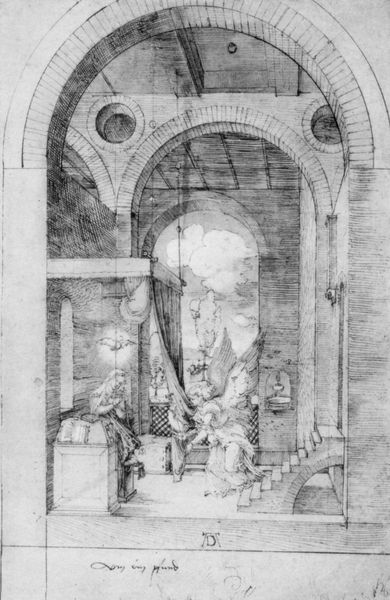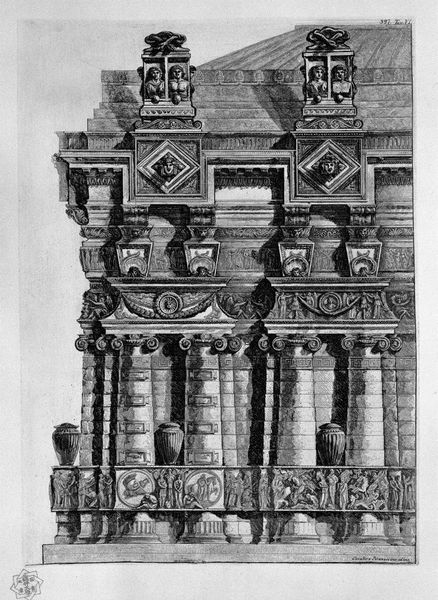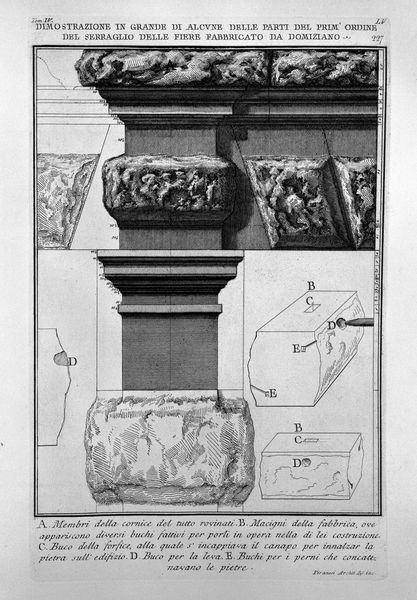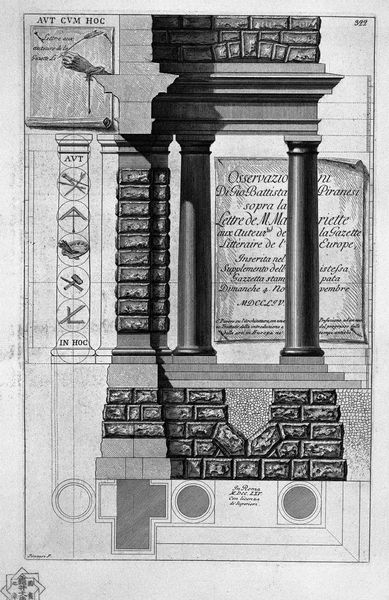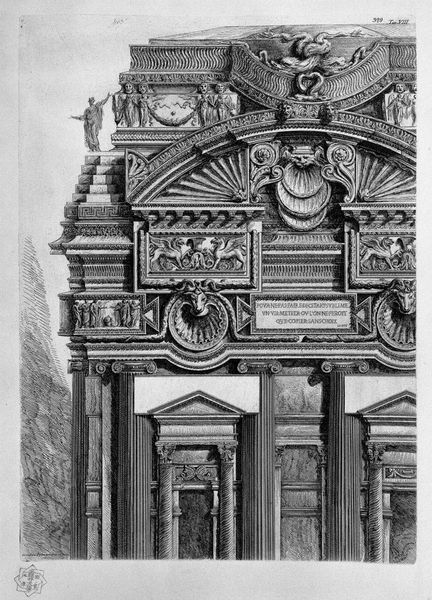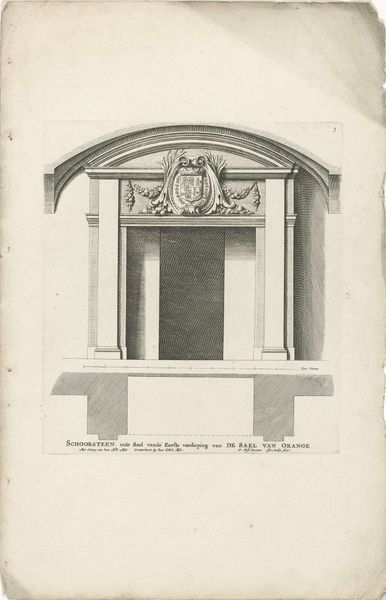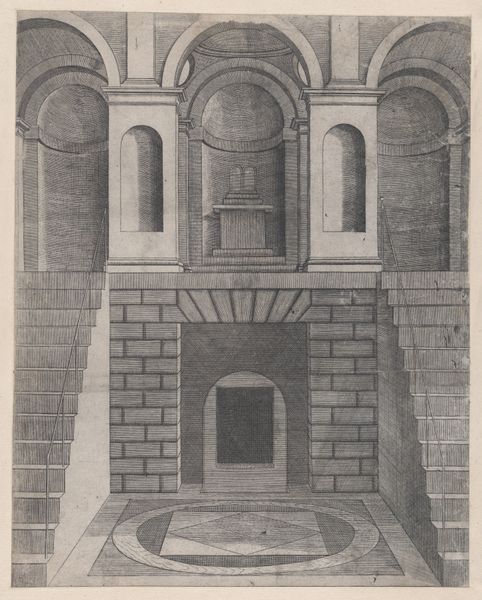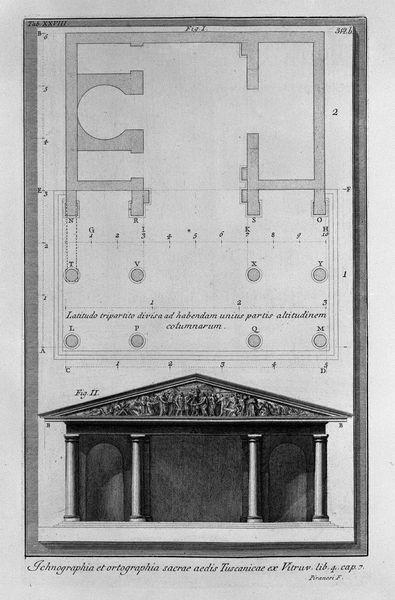
Demonstration of cross-section diameter of the Gate of the Temple of Vesta in Tivoli
0:00
0:00
drawing, print, pencil, engraving, architecture
#
drawing
#
neoclacissism
# print
#
sculpture
#
holy-places
#
historic architecture
#
traditional architecture
#
charcoal art
#
geometric
#
pencil
#
arch
#
history-painting
#
engraving
#
pencil art
#
architecture
#
historical building
Copyright: Public domain
Editor: Here we have Giovanni Battista Piranesi’s "Demonstration of cross-section diameter of the Gate of the Temple of Vesta in Tivoli," a print, and drawing. The level of detail is incredible! I'm struck by how Piranesi merges meticulous architectural rendering with almost romantic depictions of ruins. As a historian, what elements in this drawing grab your attention? Curator: The tension you identify between precise architectural documentation and a romantic sensibility is key. Consider Piranesi's project in its time. He was creating these prints during a period when European elites were increasingly interested in classical antiquity. Piranesi's work didn’t just depict Roman structures, it participated in constructing an idea of Rome—one that served specific political and cultural agendas. Editor: So, these aren't just neutral records of ancient sites? Curator: Exactly. Look at the stark contrast between the meticulously rendered architectural details and the heavily shaded, almost chaotic, textures used to depict the ruined sections. What do you think that contrast communicates? Editor: It feels like the artist wants us to notice not only what *was*, but what *is* now and by consequence its change throughout the years.. almost emphasizing the effects of time and decay on these grand structures. Curator: Precisely. And what message might be conveyed by focusing on the ruins? Consider the political implications. Editor: Maybe it's about the transient nature of empires, the idea that even the greatest civilizations eventually decline? Perhaps as a subtle commentary on contemporary power structures? Curator: Exactly! Piranesi's prints fed a fascination with Roman grandeur, but also subtly questioned contemporary society through that historical lens. This print allows us to question the construction and consumption of history itself. I had never looked at this work with your vision. Thanks!
Comments
No comments
Be the first to comment and join the conversation on the ultimate creative platform.
